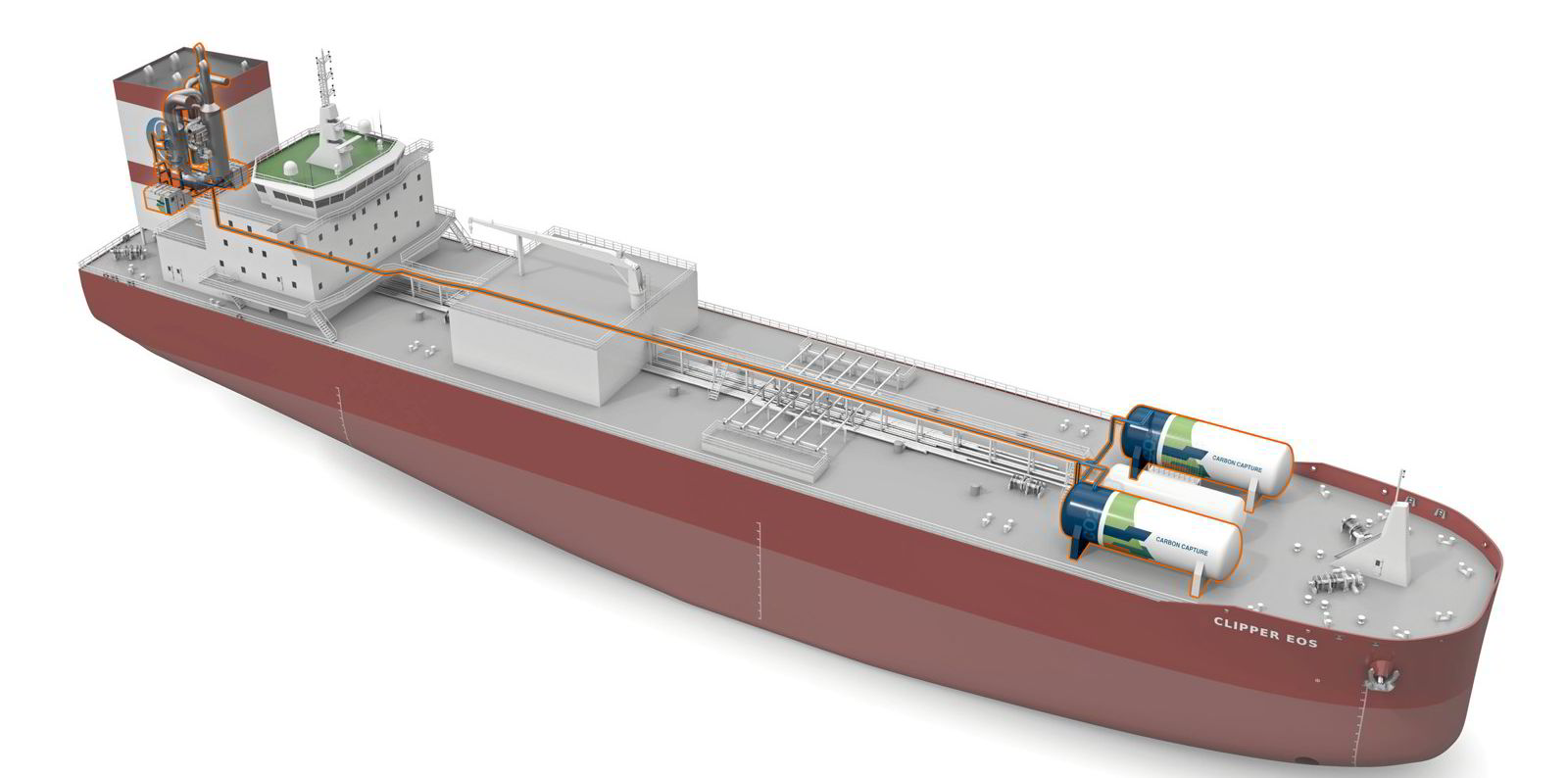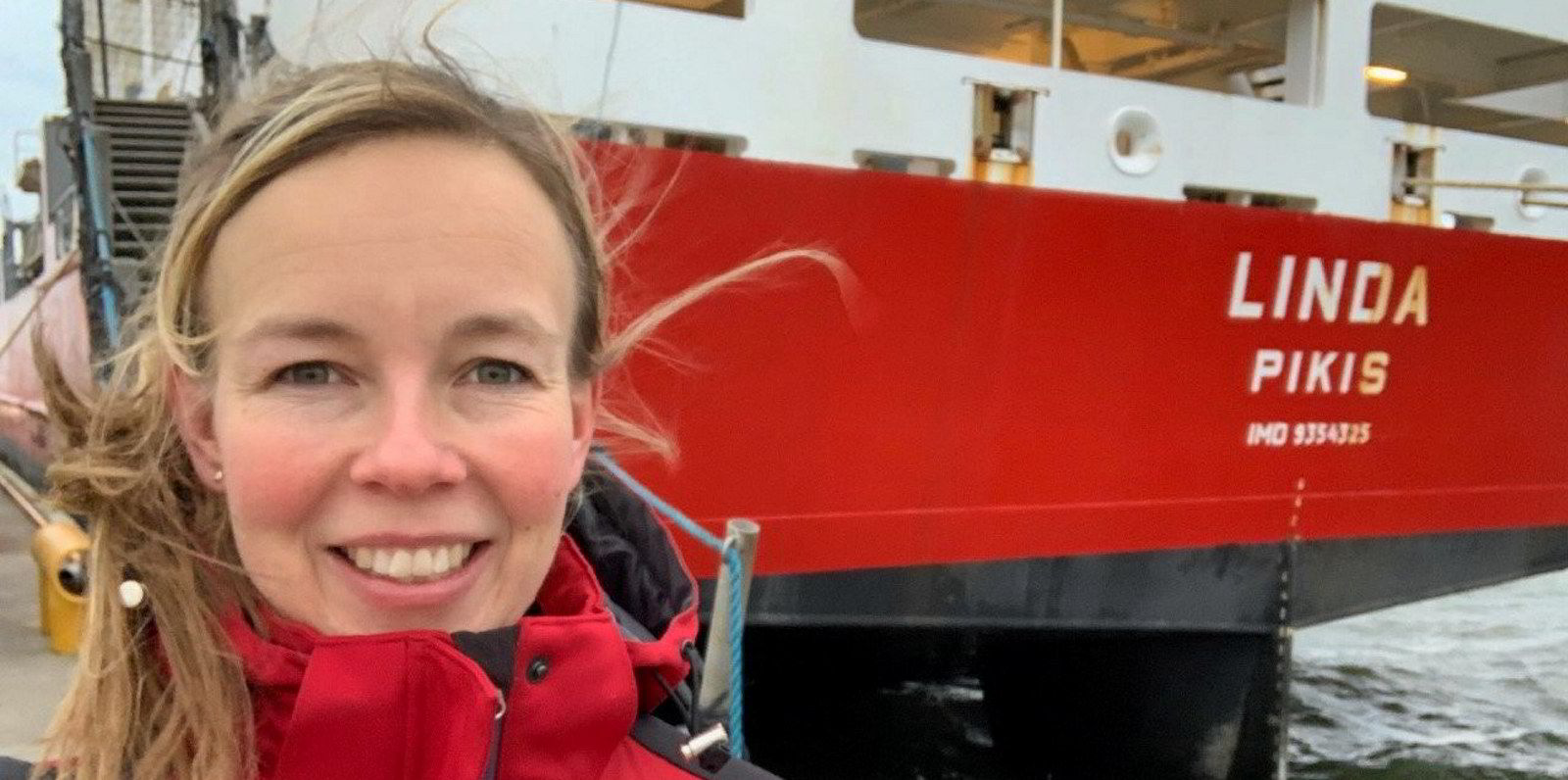Norwegian shipowner Solvang is aiming to test out the first major carbon capture and storage system (CCS) on one of its ships in 2023 or early 2024.
The company has picked Finnish technology group Wartsila to retrofit the new equipment on the 21,000-cbm ethylene carrier Clipper Eos (built 2020), following land-based tests that are already taking place in Moss, Norway.
The trial of the scrubber-based kit will be completed this autumn, the companies said.
Wartsila is initially aiming for a 70% reduction in CO2 emissions from the exhaust.
The pilot unit, including deck storage tanks, will be fitted to existing scrubber equipment.
The liquid CO2 captured will be processed for re-use in industry, for example to produce synthetic fuel, or stored underground for thousands of years.
A lot of work needed
Solvang said that what could be described as a simple set-up nevertheless requires extensive research to be adapted for marine use.
The plan includes modifying existing exhaust gas cleaning technology with particle filters, installing a carbon absorber and stripper units, and modifying liquefaction systems to cater for deck tanks.
Sigurd Jenssen, director at Wartsila Exhaust Treatment, said: "Joining forces with Solvang to build and retrofit a commercially viable CCS technology demonstrates to the industry that we are only two or three years away from bringing to market another vital tool in shipping's decarbonisation tool kit."
He told TradeWinds he is excited about the project.
Faster results than alternative fuel

"It will prove this is a good way to get bigger reductions faster," the Wartsila man said.
"If you're going to convert the fleet to any other fuel, that's going to take ages. This is something that can be done at least reasonably quickly," he added.
And he said: "This is good for shipping and it's good the environment."
Clipper Eos has been time chartered by Marubeni Corp in Japan since delivery.
The Japanese company has said it is committed to cooperating with Solvang and Wartsila to enable them to perform relevant testing and installation of equipment on the ship.
"We are excited to see how this collaboration with Solvang evolves in the coming months. Our land-based test unit is nearing completion, and we will then move to making it a reality on the Clipper Eos, ensuring that both Wartsila and Solvang remain at the forefront of maritime sustainability technology advancement," Jenssen said.
Solvang chief executive Edvin Endresen added: "Carbon capture and storage is an exciting development that we are proud to support, and strongly believe that this technology could be an important key to decarbonise the world's deep-sea fleet.
"As a forward-thinking company that is equally passionate about ensuring the industry's transition to decarbonisation, Wartsila is the perfect partner as we look to scale up sustainable technologies across our fleet and reduce shipping's environmental impact on the world," the CEO said.






